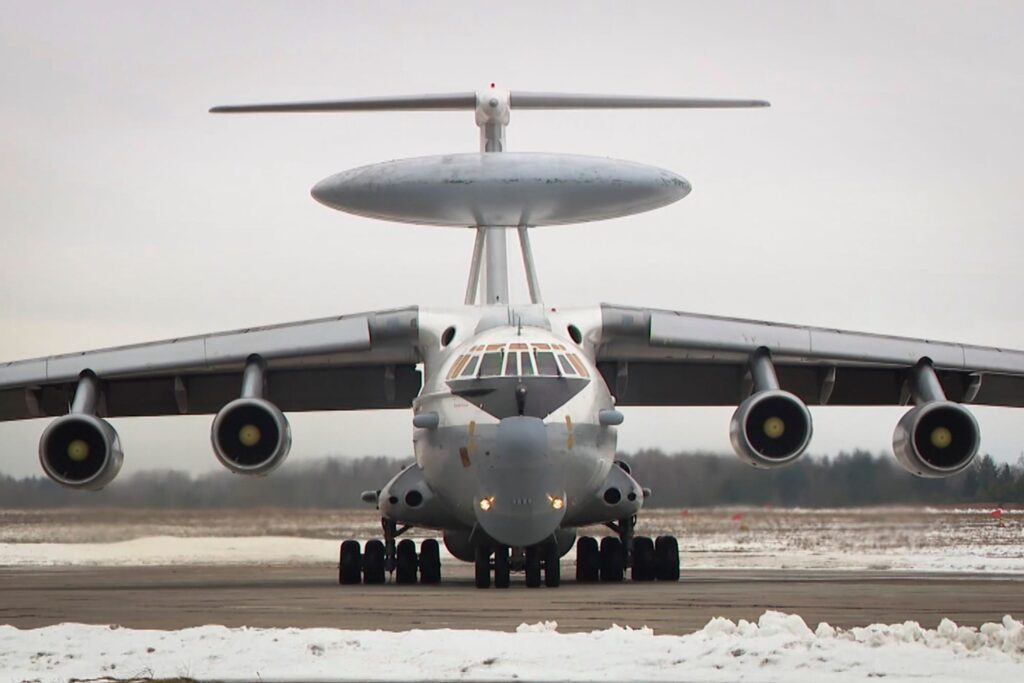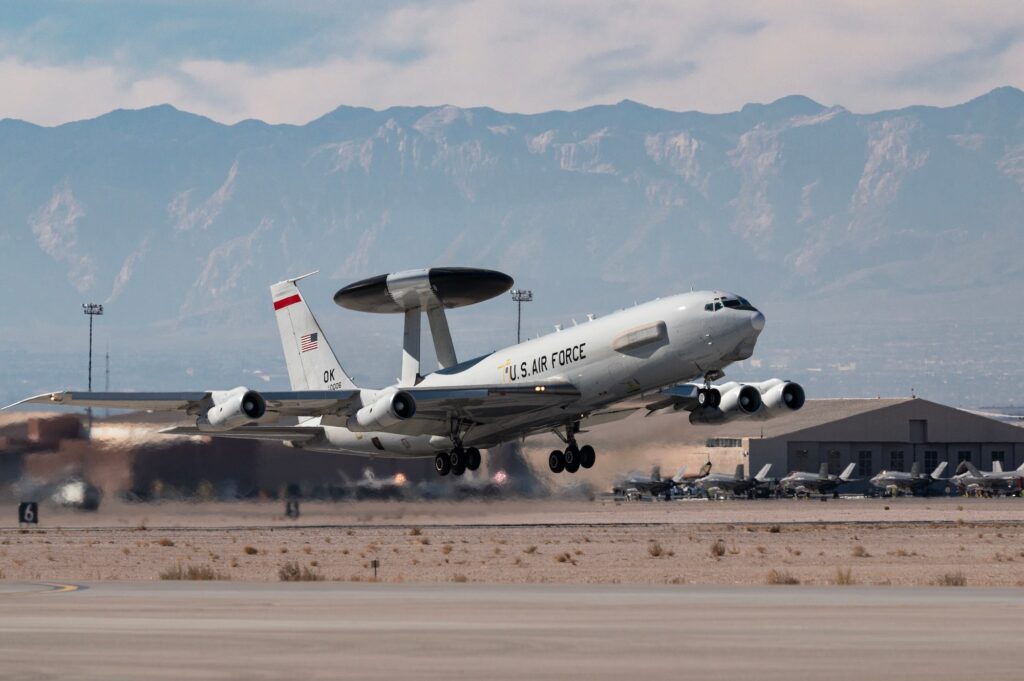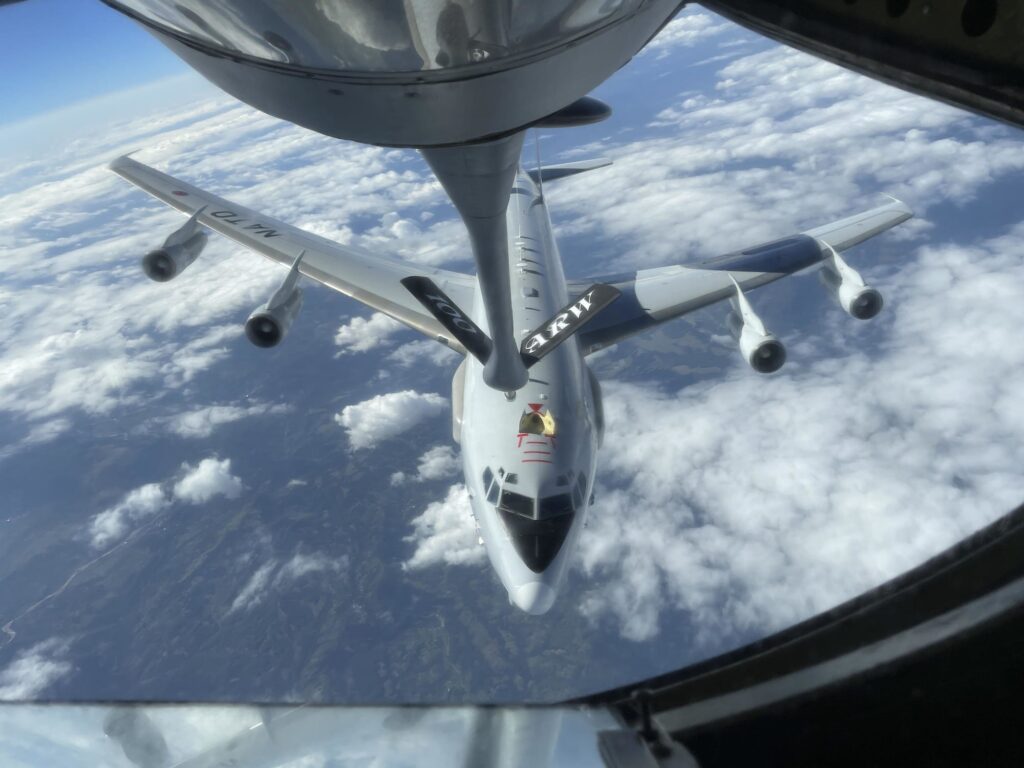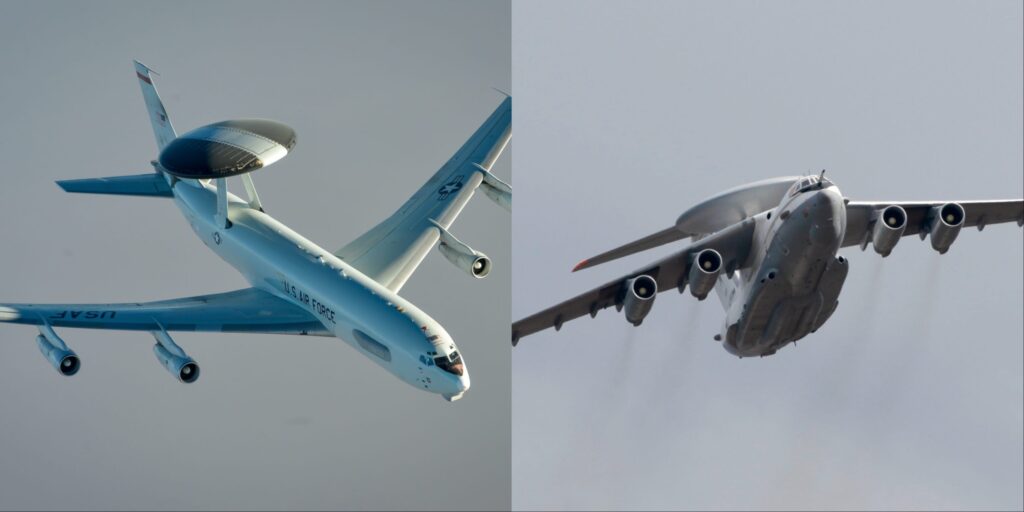- Ukraine's most significant aircraft kills in 2024 are two Russian A-50 command planes.
- The A-50 can track over 150 targets simultaneously and relay them to a dozen fighters jets.
- The E-3 Sentry fills a similar role, and has played an active role in Ukraine from the sidelines.
Ukraine's embattled air defense network started 2024 with a string of successes.
In the first three months of the year, the country claimed to have intercepted at least 1,011 missiles and loitering munitions, and shot down at least 16 jets of the Russian Aerospace Forces (VKS) — 13 of which were downed in just two weeks.
The kills include two modern Su-35 fighters and 12 valuable Su-34 fighter-bombers. But the most significant kills may have been two Beriev A-50 airborne early warning and control (AEW&C) aircraft — platforms that carry no offensive weapons.
The loss of the two A-50s represents an enormous blow to the VKS and its operations in Ukraine.
Flying since the earliest days of the war, both sides have utilized early warning and control aircraft to enhance their capabilities and defeat each other's planes and missiles. Although Ukraine didn't inherit any A-50s from the Soviet Union, its American-made equivalent, the E-3 Sentry, has quietly played an important role in Ukraine's campaign to defend itself from Russian attacks.

The Mainstay
AEW&C aircraft are aerial radar stations meant to detect and track enemy weapon systems — namely aircraft, missiles, and naval ships. They also function as command-and-control centers from which commanders can distribute information and commands to subordinates in the field.
They originated in the latter half of World War II, when the Western Allies were finding ways to track incoming threats (particularly those aimed at ships) such as bombers, U-boats, V-1 rockets, and kamikaze aircraft.
With the development of nuclear-armed intercontinental bombers and ballistic missiles in the Cold War, AEW&C aircraft became essential. The USSR's first AEW&C aircraft, the Tupolev Tu-126, was designed to patrol Russia's 15,000-mile northern coastline for American nuclear bombers and ICBMs.
But the Tu-126 lacked look-down capability, meaning it couldn't detect or track low-flying objects underneath it. Moreover, by the late 1970s, its electronic suite was outdated.
In 1985, the Tu-126 was replaced by the A-50. Built by the Beriev Design Bureau and first flown in 1978, it is based on the Ilyushin Il-76 airframe and has a flight crew of five. Called the "Mainstay" by NATO, it has a ceiling of 40,000 feet, a range of over 4,000 miles, and a flight endurance of around 6 hours, which can be extended with aerial refueling.
Its central feature is the 32-foot wide, 6-foot-high rotodome mounted on aerodynamic struts on the rear section of the fuselage. Known as the "Mushroom" by the crew, it is operated by ten specialists and is capable of providing 360-degree scanning coverage.
In its most upgraded version, the A-50 is capable of tracking over 150 targets simultaneously at ranges as far as 400 miles, including a limited ability to detect and track certain ground targets as well. The A-50 can also coordinate and send guidance data to up to 12 friendly jets simultaneously. For example, it can relay targeting information on a Ukrainian aircraft or static targets to VKS jets, or alert Russia's ground-based air defenses to an incoming missile.
The USSR reportedly built as many as five A-50s a year, with about 42 being built by 1992, when the breakup of the Soviet Union halted production. It has had limited export success; one A-50 airframe was sold to China, but it was equipped with a Chinese-made radar and redesignated as the KJ-2000. Similarly, three A-50EIs were sold to India in 2004, though they were fitted with Israeli-made radars. In 2016, India ordered two more A-50 airframes.
Despite halting production, the Russians have been upgrading their remaining A-50s. In 2007, the A-50M variant was tested, reportedly featuring an upgraded radar and digital electronic systems. Another upgraded version, the A-50U, was introduced in 2011, and features new computers, satellite communications, a modernized radar, and new engines.
In 1991, Russian A-50s were deployed over the Black Sea during Operation Desert Storm to monitor aircraft in the US-led coalition that were flying bombing missions from Turkey. They have since served over the skies of Chechnya during both Chechen wars, helped coordinate Russian air operations over Georgia in 2008, and have been deployed to Syria as part of Russia's involvement in the Syrian Civil War.

The Sentry
The counterpart to the A-50 is the American-made E-3 Sentry. Also known as the Airborne Warning and Control System (AWACS), it was created by Boeing and replaced the US Air Force's previous AEW&C aircraft, the EC-121 Warning Star.
First flown in 1976, the E-3 was adopted by the Air Force in 1977, and began flying monitoring missions for North American Aerospace Defense Command (NORAD).
Based on a modified civilian Boeing 707 airframe, the Sentry has a flight crew of four, a ceiling of 30,000 feet, and a range of around 5,700 miles. It can fly continuously for about eight hours, but is capable of longer flights thanks to its aerial refueling ability.
Like the A-50, the centerpiece of the E-3 is its rotodome. Nicknamed the "Oreo," the radome is 30 feet in diameter and 6 feet high. It is capable of providing a complete 360-degree view of everything within a more than 250-mile radius, from the surface of the earth to the stratosphere. This extensive ground search allows it to play much more of a role in air-to-ground targeting than the A-50.
The E-3's crew size is dependent on its exact mission. Capable of carrying up to 39 personnel, a typical mission usually calls for a crew between 17 and 25. In addition to detecting and tracking targets, the Sentry acts as a command-and-control platform, and is capable of delivering combat data and orders directly to friendly assets.
The E-3 has become a silent workhorse since it was adopted. It has been deployed as part of nearly every military operation the US has undertaken since its introduction, conducted radar coverage flights for NORAD, supported anti-drug trafficking missions in Latin America, and has occasionally tagged along with the president as he travels to foreign countries.
E-3s have also been sent to allies and partners as a way to show support and provide assurance during times of crisis. They were deployed to South Korea after President Park Chung-hee was assassinated in 1979 and in Egypt in 1981 after the assassination of President Anwar Sadat. They were also deployed to Saudi Arabia throughout the Iran-Iraq War.
In all, 68 E-3s were built between 1977 and 1992. It performed so well that it has been adopted by multiple countries.
France operates four E-3s acquired between 1991 and 1992, while Saudi Arabia operates five acquired between 1986 and 1987. The UK Royal Air Force operated seven E-3s between 1991 and 2021, three of which were sold to Chile in 2022.
The US Air Force operates 18 E-3s. The second-largest customer and operator is NATO, with 14 Sentries in service with the NATO Airborne Early Warning and Control Force, a specialized multinational unit tasked with monitoring NATO airspace comprised of crew and support personnel from 19 member states.

Ukraine and future
Both the A-50 and the E-3 have played an active role in the war in Ukraine since Russia's full-scale invasion in 2022.
Russian A-50s have been monitoring Ukrainian airspace for Ukrainian Air Force jets and surface-to-air missiles. They have also helped Russian kinetic strike operations by providing live targeting data and coordinates to anti-aircraft missiles, VKS strike aircraft, cruise and ballistic missiles, and drones.
As an AEW&C aircraft, the A-50 is not supposed to be deployed close to the frontline of active combat zones. Yet on January 14, Ukraine managed to shoot down an A-50 as it was flying over the Sea of Azov. A month later, a second A-50 was claimed, this time over Russia itself.
The shoot downs are as devastating as they are surprising, since Russia is unlikely to have many remaining A-50s able to replace the losses.
Estimates vary, but Russia reportedly started the war with as many as ten active A-50s, with seven reportedly being A-50Us. In addition to the two shot down, a third A-50 was reportedly damaged in Belarus last year.
Russia has said that it will restart production of the A-50, but those efforts are likely to be complicated by Western sanctions on critical electrical components. The sanctions issues have already been blamed for delays in production of the A-50's replacement, the A-100. The Ukrainians have also targeted the factory where A-50s are produced with drone strikes.
The E-3, meanwhile, has also played an active role in the war in Ukraine, although it has done so without crossing into Ukrainian airspace.
Flying over Poland, Romania, and the Black Sea, NATO and Allied E-3s have surveilled Russian activity in Ukraine, detecting the movement of Russian jets, ships, incoming missiles and drones, and sometimes even ground units. Ukraine has been more effective at destroying critical sites like air defenses and command posts well beyond Russia's frontlines, and it's plausible that intelligence gathered by E-3 radars and sensors may contribute to this targeting.
The Russians have made their disapproval of the E-3 operations known. Last November, the Russians threatened to destroy a French Air Force E-3 that was operating over the Black Sea in what a French military spokesman described as "a particularly aggressive radio exchange."
Their importance notwithstanding, the E-3s are in need of replacement.
With an average age of around 44 years, maintaining the E-3s is only getting more difficult — especially since the airframe it is based on was originally designed and built in the late 1950s and hasn't been produced since 1991.
Last year, the US Air Force announced that it had selected the Boeing E-7 Wedgetail as the E-3's intended replacement. The service hopes to acquire 26 of the new planes by 2032, with the first planned to be introduced in 2027.
NATO announced a similar plan last November, with plans to acquire six E-7s, the first of which will enter service by 2031. The UK, which has retired all of its E-3s, is also in the process of acquiring the E-7, which is already in service with the air forces of Australia, South Korea, and Turkey.
Benjamin Brimelow is a freelance journalist covering international military and defense issues. He holds a master's degree in Global Affairs with a concentration in international security from the Fletcher School of Law and Diplomacy. His work has appeared in Business Insider and the Modern War Institute at West Point.
